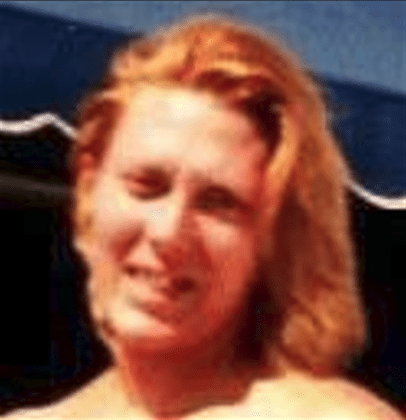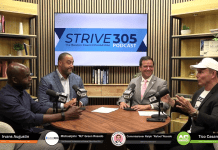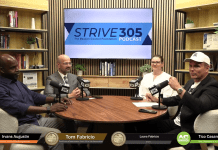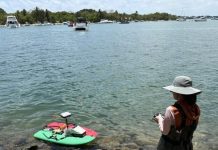|
Getting your Trinity Audio player ready...
|
September has been designated as “National Cold Case Month”. Experts estimate that the nation has 350,000 unsolved murders. Florida currently reports over 20,000 cold cases. Law enforcement agencies do not have unlimited resources and cold cases perennially become a low priority for staffing and funding.
This month, Community Newspapers turns a spotlight onto cold cases and volunteer efforts, and will feature several cases starting in this edition. Florida’s communities are interconnected and populated by people who have lived in various state locations. We will expand the reach of important questions to help seek important answers. We hope to help ensure that the crimes and the victims are not forgotten despite the passage of time.
Florida is home to a group of volunteers who have earned a unique reputation when it comes to seemingly unsolvable cold case homicides. Led by Miami Attorney Paul Novack, the volunteers include dedicated community members, former public officials, retired law enforcement officers, people with a tireless commitment to justice and to help victims’ families find closure. They have established a record of cooperation with authorities, patience, perseverance, skills, and results. All on their own time, and their own dime.
Amongst their successes, they solved the kidnapping/murder of Danny Goldman (1966, Surfside/Miami Beach), then they solved the murder of Joseph Dimare (1961, North Miami). “The information Paul Novack gave us was thoroughly vetted and confirmed,” said cold case detectives discussing the effort on an international documentary. “The factual information that he presented totally blew us away.”
The closure of the Goldman case drew worldwide attention. It was once proclaimed as “the FBI’s Number One Mystery”. Leslie Banfield, acclaimed anchor and crime reporter for NewsNation Network, lauded Novack’s “incredible investigation work and relentless efforts”. Following the closure of the Dimare case, the Florida Bar Association’s news publication called Novack “South Florida’s version of Sherlock Holmes”.
“You can’t help but admire the dedication and diligence put in by Paul Novack,” said retired Miami-Dade Police Homicide Sergeant Tony Monheim. “What he has been able to do is remarkable, a miracle.”
“Novack is an amazing cold case cracker,” said Karen Curtis, iHeart Media anchor and reporter and host of the “Full Rigor” podcast series about Florida crime. “He works tirelessly and meticulously goes above and beyond, and finds answers to organized crime mysteries that have stumped everyone else for decades.” “Their team is tenacious at going after very old, cold cases and has focused on those that have intertwined elements of homicide and corruption”.
They recently uncovered and released startling new information in the case of missing Scarface actress Tammy Lynn Leppert (1983, Cocoa Beach). They have made new findings and pieced together additional layers of organized crime information about the murders of Judge Curtis Chillingworth and his wife Marjorie (1955, Palm Beach). They identified and exposed the underlying motive of corrupt city contracting and organized crime, as well as a suspect in the shooting, of the only City of Miami civilian employee ever murdered for doing his job, Public Works Inspector Clarence Gehrke (1975, Miami).
“Heavy lifting would be an understatement”, Curtis said about the unique efforts that involve a huge devotion of personal time and resources to entirely public service investigations.
“Novack is our family’s angel”, said Richard Dimare, 83, whose father was murdered in North Miami in 1961. “Our family suffered terribly with the system abandoning us and disregarding the need for justice for over six decades until Paul Novack got it turned around and solved the case.” “Now, finally, I know that I will not go to my own grave with my father’s case unsolved.” Richard Dimare was 19 when his father was shot and killed. The case was closed in 2023.
Curtis, an award-winning Florida radio, television, and podcast journalist, recently asked Novack and his team to have a look at the 1996 cold case of Lynette Campbell. It did not take long before existing information and new leads converged to bring new hope to the case. “I am eternally grateful that Attorney Novack has initiated a new collaborative effort to dig into this after all these years,” said Karin Miller, whose sister Lynette was murdered in 1996.
Lynette Miller Campbell, 35, was a single mother living in Tarpon Springs, Florida with her mother and ten year old daughter. Lynette worked as a clerk at a nearby Salvation Army. She had been divorced for about three years. Lynette frequently responded to strangers’ personal ads published in her area. Her family reported Lynette missing after a week’s delay. Her mother told police that on Friday, May 31, 1996, at approximately 11:00 PM, Lynette left home to meet a boyfriend named “Mark”.
Around 1:00 AM she was seen at the Bridge Bar, at the Anclote Bridge. Lynette was known there. Her sister worked in the restaurant across the street, and the Bridge Bar and the restaurant were popular local places. She was with an unidentified man, described by people in the bar as clean-shaven, wearing a button-down shirt, dark hair, dark skin, about 5’11”.
At about 2:15 AM, a passing bicyclist reported that he saw Lynette’s 1978 Oldsmobile parked on the east side of the road adjacent to the bridge, and that he saw two people rolling around or struggling on the ground outside the car.
Lynette was never seen alive again. Her car was found a week later, ditched in a swampy wooded area on June 8, 1996. Lynette’s body was found still another week later, by a marine patrol officer in an airboat, in the sawgrass a few feet from the riverbank and close to where she was last seen. Her remains had been in the water for over two weeks, and were said to be badly decomposed. A cause of death was not publicly declared.
There were waves of rumors about the killer. It was a passing fisherman or diver from one of the shrimp or sponge vessels coming in and out of Tarpon Springs. It was a serial killer. A passing motorist. A stranger she met at the bar. Media reports said that “Mark” was never identified and never came forward.
Physical evidence processing did not yield useful results. Detectives undertook a major effort and interviewed many people about the case, but it went cold. Despite occasional file checks and some re-testing, it stayed cold.
In 2025, Lynette’s sister encouraged Novack and his team to see if there was anything they could do to shed some light on the case after decades of the family’s waning hope for answers. The case was no longer on anyone’s active radar.
Due to Attorney Novack’s communications with County law enforcement, a new official review has begun. The information obtained by the volunteers, including names and statements, records from numerous sources, new interviews, and evaluations, has been shared with the Detective recently assigned to the case.
Leads and connections have been illuminated, deserving a renewed focus. Lynette’s sister Karin recalls that the man with Lynette at the Bar was a part-time Florida resident, staying in the St. Pete Beach area, who was of Indian descent and worked for Carnegie Mellon University. He had authored a book that Lynette had started reading. He was called “Chellum” or something that sounded similar. Karen remembers hearing later that he left the Bar before Lynette did.
With the information they started with, the volunteers identified, and found new information about, the person who apparently was the “Mark” that Lynette was planning to see that night. They have also identified another, new person of interest, and both of them warrant further consideration.
Both were in the area. Both have records of domestic violence, drunkenness, and arrests. Each of these two men match, to various degrees, a person who, by third party accounts related again to Novack in 2025 interviews, showed up wet and upset early that morning at a friend’s home, begging for help in moving a car after he had done something terrible.
Both of these men are now fully identified, are alive, and continue to live in Florida. Official interviews of them have been requested.
Multifaceted investigation continues. An obscure county committee research document was found, indicating that there was reason to believe that Lynette Campbell’s murder could be considered an “intimate murder”.
Attorney Novack also discovered that one of those men was stopped and questioned by police, about a completely separate matter — five years after Lynette’s murder, walking along that same bridge, precisely adjacent to where her body was found. Coincidence?
The encounter was noted at the time, but the record was not found, recognized or analyzed for over two decades, until Attorney Novack discovered it as part of casting a very wide net to bring in new information about people, places, and events. This encounter and other information was never previously known as potentially being either a piece of the puzzle, or, just coincidence.
“Every piece of information matters, and all input is welcome,” said Novack. “This case can still be solved.”
Know anything? Step up and share the knowledge. The Lynette Campbell case, like so many others, has been cold and unsolved for far too long. A volunteer effort has turned a new light on the case and collaboration between authorities, volunteers, and the community offers hope for final answers.







